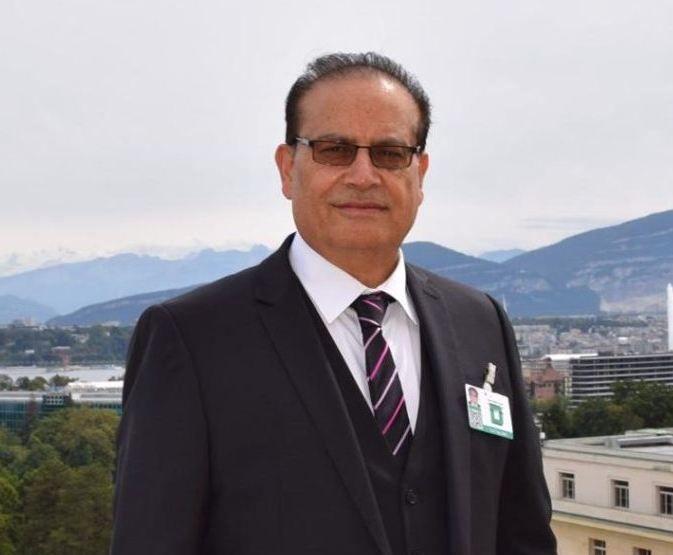Trump’s Strategy to Contain China (Part-II)
By: Qamar Bashir
Macomb, Detroit, Michigan
During the two confirmation hearings—Marco Rubio’s confirmation hearing for Secretary of State and the Senate Finance Committee—China was identified as America’s most significant geopolitical challenge. Various strategies were discussed to counter China’s rapid and unprecedented rise on the global stage, including a three-point strategy: strengthening U.S. alliances in the Indo-Pacific, restricting China’s access to advanced U.S. technology, and countering Beijing’s military aggression in Taiwan and the South China Sea. The discussion urged the Trump administration to work tirelessly to end economic dependence on China, particularly in critical industries such as semiconductors and rare minerals, to safeguard national security and economic resilience.
While outlining perceived threats from China, the hearings cited alleged cyberattacks on U.S. infrastructure, such as the Treasury Department hack, sabotage of communication cables in Asia and Europe, and military intimidation of Taiwan and the Philippines in the South China Sea. Additionally, China was accused of waging economic warfare through its control of critical minerals and manufacturing dominance, posing a significant risk to U.S. economic stability. Senator Rubio warned that without decisive action, China would dominate global supply chains, making the U.S. dangerously dependent on Beijing for essential goods, including medicine and technology.
Both committees expressed deep concerns over China’s Belt and Road Initiative (BRI), arguing that Beijing has strategically used the massive infrastructure project to ensnare developing countries in debt traps and gain economic and geopolitical leverage. Senators John Cornyn and Todd Young warned that the BRI has expanded China’s influence across Asia, Africa, and Latin America, with over 150 countries now part of the initiative, many of which are struggling with unsustainable debt burdens.
They noted that China provides large-scale infrastructure loans with opaque terms, and when countries fail to meet repayment obligations, Beijing seizes control of critical assets such as ports, railways, and energy infrastructure, effectively making these nations financially and politically subservient to Chinese interests. The senators called for a robust counter-strategy to curb China’s economic coercion and reassert U.S. influence in global infrastructure and development financing.
Senators Maria Cantwell and Bill Cassidy further warned that China’s BRI projects often involve exploitative labor practices, where Chinese firms and workers dominate construction contracts, leaving little long-term benefit for local economies. To counter this, they advocated for stronger U.S. trade and investment partnerships that prioritize local job creation and economic sustainability.
They proposed expanding U.S.-backed alternatives, such as the Development Finance Corporation (DFC) and the G7’s Partnership for Global Infrastructure and Investment (PGII), to offer more transparent and sustainable financing options to emerging economies. Instead of relying solely on public funds, they suggested that the U.S. encourage private-sector-led investments in infrastructure projects in Africa, Latin America, and Southeast Asia, providing a viable alternative to China’s state-backed lending.
Additionally, Bessent and Senator James Lankford proposed leveraging U.S. energy exports as a tool to counter China’s growing economic foothold in developing nations. By increasing American liquefied natural gas (LNG) and oil exports, the U.S. could offer an energy alternative to Chinese-financed coal and fossil fuel projects under the BRI, reducing these countries’ dependence on Beijing.
Another proposed measure involved strengthening diplomatic and security alliances, particularly with Indo-Pacific nations, to reduce China’s dominance over global infrastructure and supply chains. Senator Cornyn emphasized that the U.S. must work closely with India, Japan, and Australia through the Quad alliance to provide a coordinated, transparent, and non-exploitative alternative to the BRI.
Bessent concluded that a Trump administration would take a more aggressive stance on countering China’s economic expansion, ensuring that the U.S. leverages trade agreements, private-sector investments, and strategic partnerships to prevent more nations from falling into Beijing’s economic orbit. The hearings made it clear that reasserting U.S. leadership in global infrastructure financing and reducing dependency on China’s BRI loans would be a key priority for the incoming administration.
It was acknowledged that, under the watch of U.S. leadership, the BRI has expanded to 151 countries, encompassing a combined GDP of $41 trillion and a population of approximately 5.1 billion people. With over $679 billion invested in infrastructure projects—including power plants, railways, highways, ports, and telecommunications—the BRI has reshaped global trade and economic connectivity.
Despite the initiative’s rapid expansion over the past 12 years, the U.S. is only now in the brainstorming phase of formulating a countermeasure. The current discussions revolve around developing an alternative to the BRI—one that operates under U.S. leadership and is marketed as a more viable and transparent system of lending and investment. However, this realization comes too little and too late. Even if the U.S. were to start constructing a parallel system today, it would take at least 12 years to reach the level of maturity that the BRI has achieved as of 2025. By that time, the BRI itself would have advanced another decade, further consolidating China’s economic influence.
Given this reality, a more pragmatic approach for the U.S. would be to rethink its strategy—not by opposing the BRI, but by engaging with it. Instead of treating China as a rival in global infrastructure development, the U.S. should consider a cooperative approach, joining BRI projects as an equal partner. China has consistently extended invitations to all nations, including its geopolitical adversaries such as the U.S. and India, to collaborate within the BRI framework.
By leveraging the unmatched expertise of U.S. entrepreneurs, managers, and innovators, the BRI could be significantly enhanced in terms of efficiency, transparency, and governance. A strategic partnership between the world’s two largest economies would not only benefit the partner nations involved but also set a new precedent for global cooperation. Rather than engaging in a zero-sum competition, a U.S.-China collaboration on infrastructure and development initiatives could usher in an era of shared prosperity, sustainable growth, and geopolitical stability.
Ultimately, global economic development should not be viewed as a contest of dominance but as an opportunity for mutual benefit. By fostering a cooperative rather than adversarial relationship, the U.S. and China could lead the world toward an unprecedented level of economic integration and progress (Continues).
By: Qamar Bashir
Press Secretary to the President (Rtd)
Former Press Minister at Embassy of Pakistan to France
Former MD, SRBC











